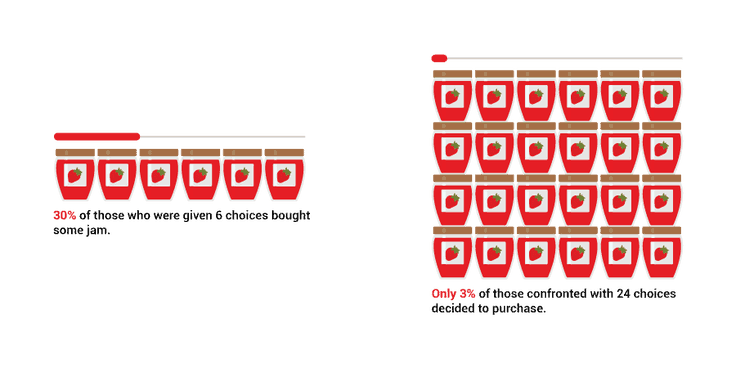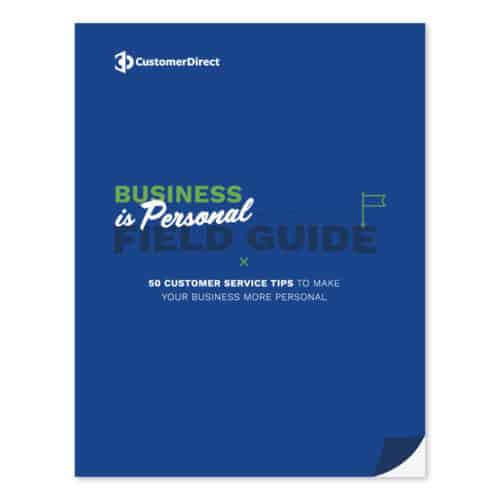Business decisions, rocket science, and understanding the difference.
Part 1.
Have you ever heard the one definition of insanity that goes something along the lines of “doing the same thing over and over again, and expecting a different result.” Well, what you’ll find here are a series of thoughts, observations, suggestions, and anti-suggestions to help you briefly pause, reflect, and potentially act your way to a different outcome. That is, if your organization, department, and/or your P&L is/are in need of a different outcome. If everything is perfectly hunky dory in your workaday world, then bully for you! Congrats and keep it up! But if you have this repeated inkling that things at work shouldn’t be so difficult, or you find yourself wondering why even the seemingly best, smartest efforts continue to deliver less than desired results, then we invite you to read on. And keep on keeping on.
Part 2. | Are you collecting the “right” data?
Data doesn’t need to be a dirty word. In fact, stop thinking of it as useless numbers, and spreadsheets, and reams of paper to be shredded and discarded (by the way, if you’re shredding paper, we hope it’s recycled paper), and instead as your balance sheet’s new best friend. You no doubt have data on hand that, if set up, collected, and analyzed properly, can illuminate efficient strategies and dollars that will make a SIGNIFICANT positive impact on your bottom line – with little to no added expense.
A recent article in Forbes noted just one such example where a data strategy took an organization’s customer service levels, customer loyalty, revenues, and profits to dramatic new heights: The supermarket group Tesco uses a data ecosystem/CRM to monetize data from its loyalty program, the Tesco ClubCard, through its customer science subsidiary, Dunnhumby. In return for opting in to ClubCard, customers receive personalized offers. Then, for a subscription fee, Dunnhumby provides consumer-packaged goods (CPG) suppliers with an analytics platform that they can use to query anonymous retail transaction data, understand category dynamics and develop targeting strategies. The analytics platform also controls suppliers’ access to the data (preventing direct customer contact, for instance). This model has helped Dunnhumby generate annual aggregate gross billings of $500 million globally.
Collecting data that provides insight into who your customers are allows your business to tailor powerful experiences that drive consumer action.
The big picture? Looking at the right data, not just endless mountains of it, can give you actionable insights into what your customers want.
Part 3. | “Good customer service costs less than bad customer service.” – Sally Gronow
OK, we’ll admit it, we’re not big fans of pithy little quotes. So here’s another:
“The customer’s perception is your reality.” – Kate Zabriskie
So why our break from tradition? Because we are talking about something very important here: customers. And, as Michael LeBouef once said, “Every company’s greatest assets are its customers, because without customers there is no company.”
An average business loses 10% of its customers each year due to dissatisfaction with that business according to DestinationCRM.com, an online site dedicated to customer relationship management. What does that 10% represent? Well, if you cut those losses by just 5 percent, you can in turn boost profits by 25 to 125%.
That’s right, 25 to 125%.
Now, there are going to be certain customers that you lose through no fault of your own. No matter how silver platter the experience in dealing with your organization is/was. But since it costs six to seven times more to acquire a new customer than to keep an existing one, examining why you lost customers that you could have easily kept in the fold is certainly a examination worth making. So, here are just a few tips to consider if you are looking to maximize customer satisfaction…and the associated revenue and profitability that grows, or is lost, to it.
Part 4.
How else are we supposed to get the attention of potential customers unless we overwhelm them with information and communication about that information on a constant, and overwhelming, basis? So many choices out there mean we have to be louder and bolder and smarter and faster and bigger and better to get customers to choose us versus them, right?! Better SEO, better analytics, better anticipation, better creativity, better strategy, better tactics, better everything. And more of it!
Well, not so fast my friends. Because like you, customers are human. There is only so much information that the human brain can absorb and process and recall before it gets relegated to that vast wasteland of discarded overload. So what to do, what to do?
Here’s an idea – keep it simple.
Wait…whuuuuuut? Blasphemy is what that is. Customer acquisition is supposed to be hard and difficult and expensive and complex and, well, hard.
Or is it. As noted in a Harvard Business Review article penned by Patrick Spenner and Karen Freeman, “Over the past two decades, a wide range of experiments have shed light on how an excess of information and choice impairs decision making.”
One of the most common consumer responses to the excess is to forgo a purchase altogether. In a classic experiment, Sheena Iyengar, then a doctoral student and now a professor at Columbia Business School, set out pots of jam on supermarket tables in groups of either 6 or 24. About 30% of those who were given 6 choices bought some jam; only 3% of those confronted with 24 choices did. As the psychologist Barry Schwartz demonstrates in The Paradox of Choice, an excess of input leads to angst, indecision, regret, and ultimately lower satisfaction with both the purchase process and the products themselves. Dozens of related lines of research confirm what now seems like common sense: Too much choice or too much information can be paralyzing.
So then what do we do to win over the hearts and the minds of the consumer in clean, “simple,” and effective fashion? Stay tuned…that’s enough inundation for the moment.
Part 5
When we last left you, we were discussing cutting through the inordinate amount of modern day communication-related clutter, to connect with your audience (i.e., existing/potential/previous customers) in a direct, effective, and, yes, clutter-cutting way. And here we thought technology was supposed to improve our ability to connect with our customers more directly, right? Mass marketing to an audience of one, anyone?
Well, this dream can still come true, as long as you approach the modern with some…wait for it….waaait for it… waaaaaaaait for it…old-school traditional marketing techniques in mind.
Let’s consider a situation. When is the last time you answered the call to action from an email that was pretty obviously generated within a Constant Contact or Mail Chimp-type email marketing campaign? Meaning, an email that had an actual service or product to offer, other than a generous $20,000,000.00 no obligation gift from a Nigerian prince?
Well, if the stats hold true…probably never. MAYBE one or two. Why? Well, there are a lot of emails being sent out. Many to purchased mailing lists. Many from companies you’ve never heard of, and for products/services for which you have no interest. Or, let’s say it is from a company you might be interested in hearing from, but the pitch, the promotion, or in the case the subject line, does nothing to interest you.
So what to do? Abandon email marketing, right? Or, maybe utilize the comparatively low-cost, potentially very high-return opportunity offered by this type of technology-driven communication platform (as well as SEO and mobile marketing and website optimization and, and, and) by implementing and executing it more effectively…with some of these simple, effective, traditionally strategic, clutter-cutting marketing tips.





